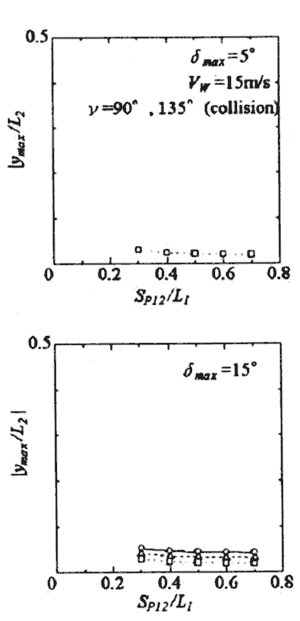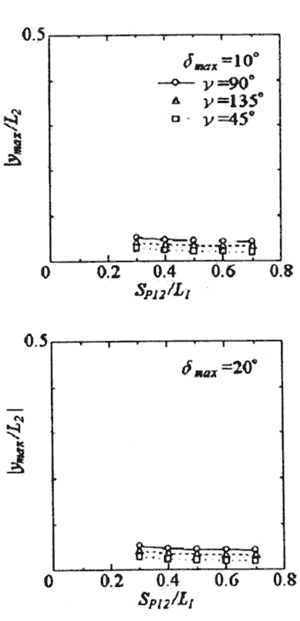Fig.4.9 |
Deviated maximum lateral distance horn the original course with function of wind velocity and direction for PCC |


In the meantime, the results for deviated maximum lateral distance from the original course with function of SP12/L1 for the case of overtaken and overtaking PCC vessel under the condition of U2/U1 = 0.6 are shown in Fig.4.10 and Fig.4.11. From these figures, in case of v = 135° an overtaken vessel is pretty much deviated from the original course, while it is guided securely with intended direction for the overtaking vessel. In addition, in case of v = 90°, an overtaken vessel with ranges of 20 degrees in maximum rudder angle is uncontrollable regardless of SP12/L1 , while it is guided securely with intended direction for the overtaking vessel. Also, in case of V = 45°, the overtaken vessel with ranges of 15 degrees in maximum rudder angle regardless of SP12/L 1 is pretty much deviated from the original course. This fact seems to be due to the reason that in case where the wind velocity is very large in comparison with the advance speed of the PCC vessel, she is uncontrollable because the area of wind pressure acting to the structure above the water surface is far larger than other ship types, such as VLCC or general cargo ship. Accordingly, an overtaken PCC vessel navigating at low speed should be cautioned with high alert for the case of wind, and it is considered that speeding up an engine is required if necessary.
|